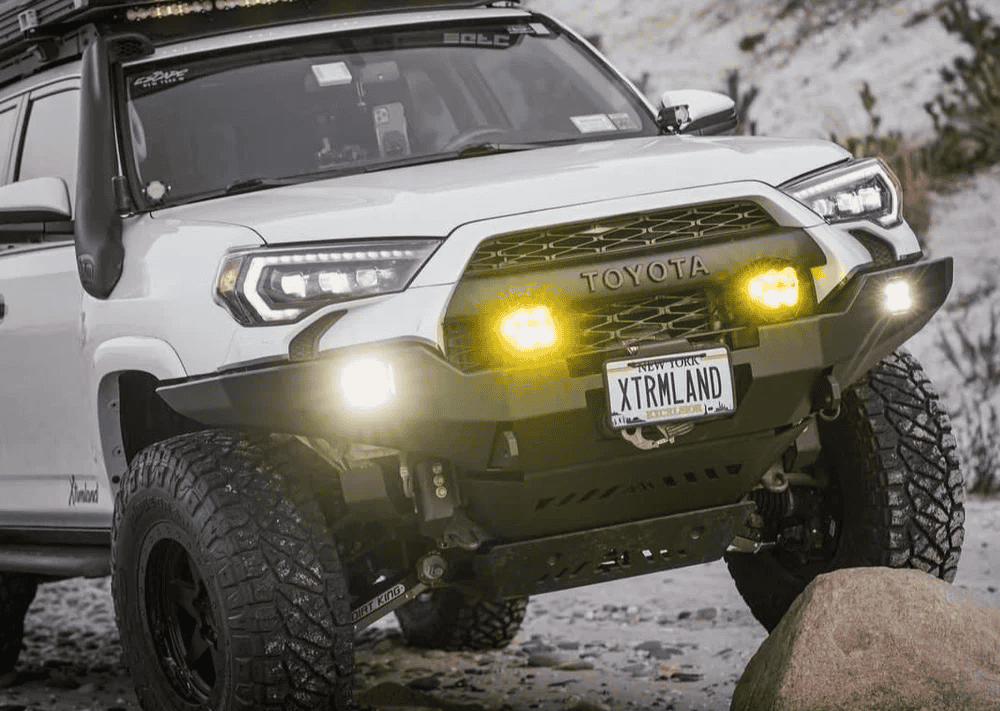Overland Vehicles

An overland canopy encloses the bed, turning open cargo into secure, weatherproof space that can be organized, lit, and powered. For a Ford Ranger, the right canopy supports roof loads for kayaks, bikes, recovery boards, or a tent while protecting tools and camp gear below. A strong frame with proper rack interfaces spreads the load and keeps weight balanced. Good sealing, dust mitigation, and drainage matter as much as strength because backroads shake loose any weak point. Think of the canopy as the backbone for storage systems and the base station for sleep, cook, and work functions.
Aluminum canopies win on weight and corrosion resistance, often featuring extrusions and internal bracing that accept modular accessories. Composite shells insulate well and stay quiet, which helps if you sleep inside or wire in a heater. Steel is durable and repairable but heavier, so it demands careful attention to payload. On a Ranger, lighter structures help preserve suspension travel, keep center of gravity manageable, and reduce strain on tires and brakes when loaded for extended trips.
Off pavement travel sends fine dust through tiny gaps. Quality bulb seals around doors, proper compression latches, and sealed pass-throughs for power are key. Look for drip rails, rain gutters, and positive pressure vents to keep water and silt out. If you run gravel or desert routes, consider foam strips at the tailgate and a filtered vent that slightly pressurizes the bed space to push dust outward rather than invite it in.
Add up the canopy, rack, tent, water, fridge, drawers, and tools before you add passengers. A mid size truck can become overweight quickly. Keep heavy items low and forward of the axle, and match spring rates to real world loads, not brochure numbers. Balanced weight reduces sway, improves braking, and protects wheel bearings, especially on washboard or rocky trails.
Fitment drives reliability. Bed length, cab height, and mounting interface all affect how a canopy rides and seals. For late model trucks, the 2019 Ford Ranger camper shell category is broad, but not all shells seal the same around the tailgate contour. Confirm whether your truck uses clamp mounts or a track rail, and confirm third brake light wiring and camera considerations. If you plan to mount a tent and accessories, choose a unit with a reinforced roof and known dynamic and static load ratings.
Many owners search for a camper shell for Ranger models with sliding side windows, but solid panels can be stronger for heavy rack loads. A cap Ford Ranger setup can use side hatches for quick access to drawers or a fridge slide. If you prefer a clean profile, a Ford Ranger bed topper with a low roof reduces wind noise and drag, while a high rise Ford Ranger topper adds interior volume for bins or a sleep platform. A Ford Ranger truck canopy with roof tracks allows racks to be placed over structural supports rather than thin panel sections.
The market uses many names for similar gear. You might see Ford Ranger truck cap or Ford Ranger truck topper listings for the same style of shell. Likewise, ranger bed cap, ranger topper, and ranger truck cap often refer to bed enclosures with side windows or hatches. Regardless of the label, confirm the shell is built for your specific generation, bed size, and tailgate seal to keep dust and water out.
A canopy is a shell until you design the inside. Start with a flat, ventilated bed platform over drawers for tools and camp kit. Keep the fridge on a slide near a side hatch for easier access on a crowded trailhead. Add LED task lighting inside the canopy and under the hatch, and wire a fused power system with solar input and a DC to DC charger. Passive vents or a small fan help manage condensation if you sleep under the topper in cold weather. On the roof, use crossbars that tie into structural rails, then mount a lightweight tent or a low profile storage case to keep heavier water and recovery gear inside and low.
Security matters. Choose keyed compression latches, reinforce hinge points, and route wiring through grommets to avoid chafe. If you run forest roads at night, add a rear work light on the rack to reverse safely and a side scene light for camp setup. Plan recovery gear storage close to the tailgate so you can reach it quickly when stuck.
For daily use, a Ford Ranger truck canopy can still carry home improvement materials or bikes. Quick release rack mounts and removable drawer modules help the truck shift roles from weekday duties to weekend adventures without hassle.
If you want the canopy to work as a system, integration matters. Our team aligns roof loads, suspension tuning, and electrical so your Ranger feels composed on highway and trail. We design clean wiring with protected pass-throughs, seal tailgates against dust, and mount racks to structural points so tents ride quietly and securely. See how we approach complete builds on our Overland rigs page, and review our process on the Custom overland upfit overview. Want to understand the shop and team behind the work? Read Why choose OZK Customs.
You bring the Ford Ranger and the goals, we handle the canopy integration, racks, power, lighting, and storage that match your payload and travel style. Tell us where you drive, what you carry, and what you want to access quickly, and we will map a setup that works from day one.
Ready to turn your Ranger into a capable travel truck? OZK Customs designs and installs overland canopy systems, racks, power, lighting, and secure storage that match your routes and payload. Send your build goals and timeline—our team will spec the right topper, integration, and accessories, then schedule your install.
ADDRESS:
6159 E Huntsville Rd, Fayetteville, AR 72701
PHONE:
(479) 326-9200
EMAIL:
info@ozkvans.com